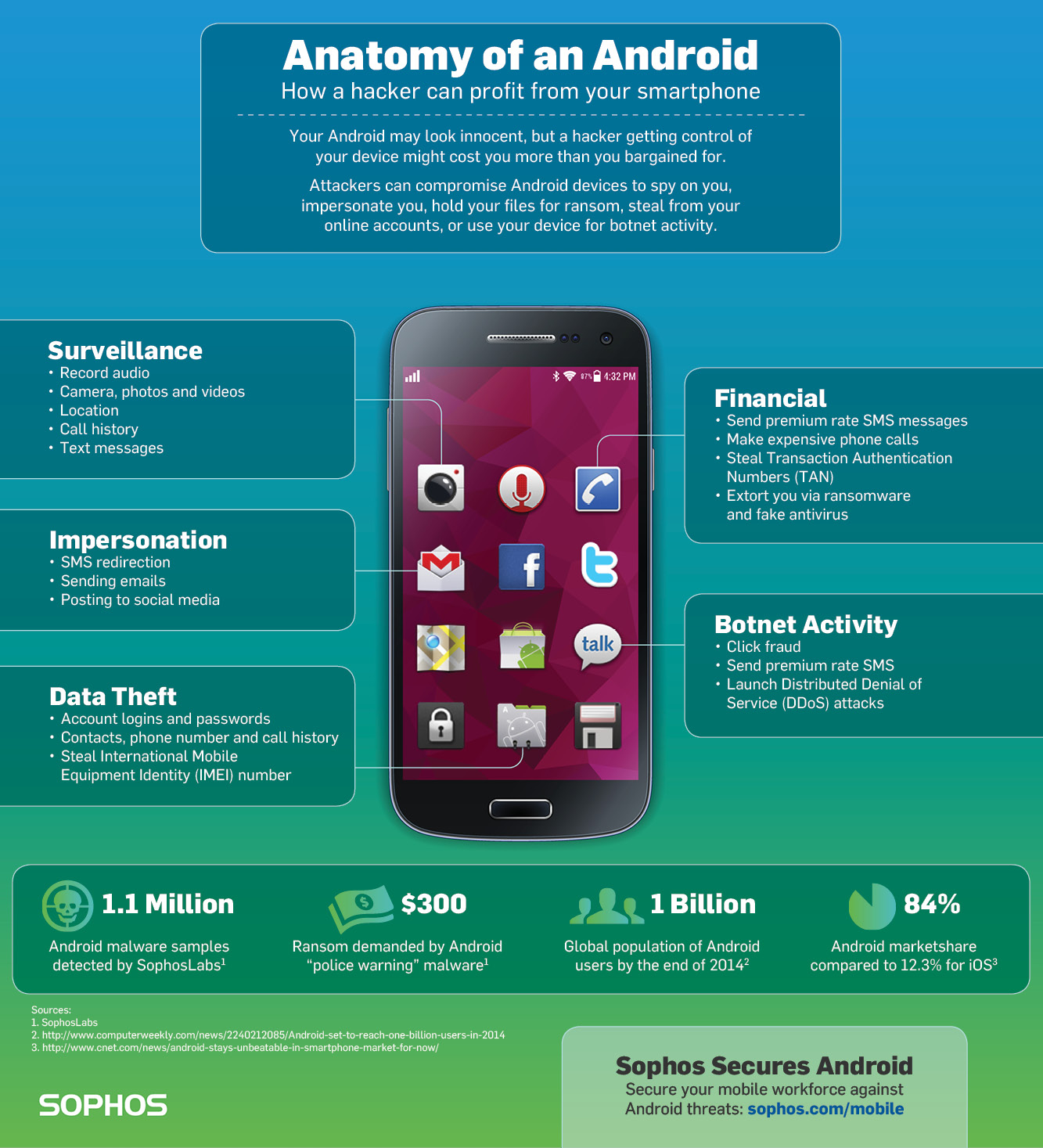What’s causing the explosive growth in Android malware threats?
Submitted by John Zorabedian on
There’s a boom going on right now in mobile devices. And with people using their mobile devices for computing tasks that once were the province of desktops and laptops, malware authors are focusing on mobile too.
At the front of the mobile pack is Google’s Android, with 84% of marketshare and a range of new devices rolling out that compare favorably with Apple’s iPhones on features.
Android is still a relatively young platform, going back only as far as October 2008, when Android Dream was released. But in the last six years, Android’s growth has been explosive, with more than 1 billion Android users expected by the end of 2014.
So it’s not surprising that cybercriminals are going after users where they are most likely to be found – on their smartphones and tablets.
SophosLabs has detected more than 1.1 million samples of Android malware to date, ranging from ransomware such as SimpleLocker, to the self-spreading SMS virus known as Selfmite.
In the past two years the growth of Android malware has taken off like a rocket, surging 1,800% since 2012, with an additional 500,000 malware samples in just the last year.
Of course, Android malware is still rare compared to Windows malware, which still faces the bulk of hacker attacks. But no longer is it possible to ignore the mobile threat.
Check out this infographic to see how a hacker can profit from a compromised Android – and remember that the data on mobile devices is just as important to protect as anything on PCs.
Want to hear more from Sophos?


